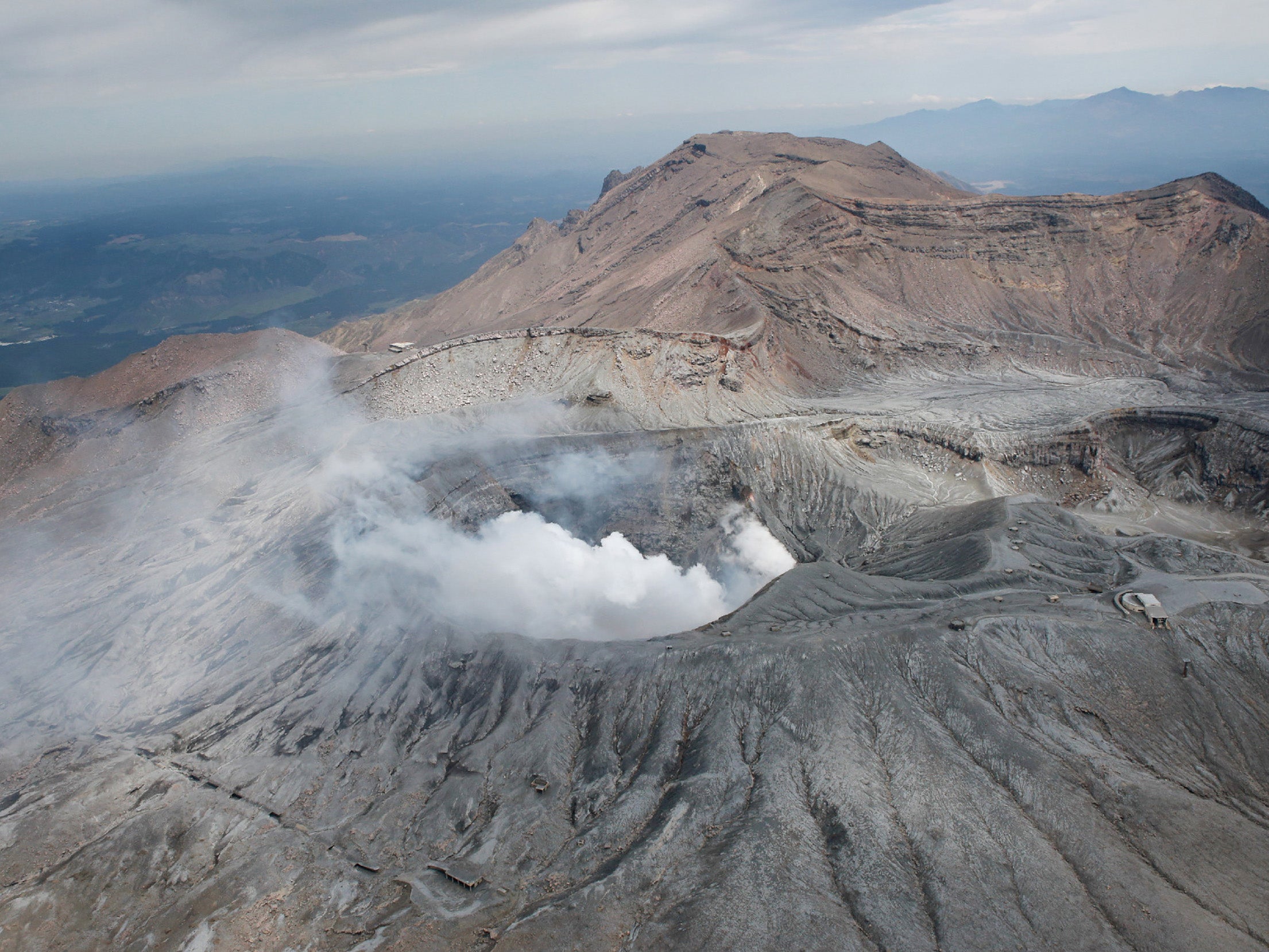Mount Aso: Japan's biggest active volcano could erupt at any point, scientists warn
Volcano can spew plumes of smoke and ash for seven miles

Your support helps us to tell the story
From reproductive rights to climate change to Big Tech, The Independent is on the ground when the story is developing. Whether it's investigating the financials of Elon Musk's pro-Trump PAC or producing our latest documentary, 'The A Word', which shines a light on the American women fighting for reproductive rights, we know how important it is to parse out the facts from the messaging.
At such a critical moment in US history, we need reporters on the ground. Your donation allows us to keep sending journalists to speak to both sides of the story.
The Independent is trusted by Americans across the entire political spectrum. And unlike many other quality news outlets, we choose not to lock Americans out of our reporting and analysis with paywalls. We believe quality journalism should be available to everyone, paid for by those who can afford it.
Your support makes all the difference.Japan’s biggest volcano may erupt at any time, scientists have warned.
A study of the effects of large earthquakes on Mount Aso in April led volcanologists to predict it would erupt.
The scientist's predictions came true in October – on the day the paper was accepted to a scientific journal – when the volcano sent plumes of smoke stretching seven miles across the sky.
But according to the paper's author, a professor from the university of Kyoto, the volcano is set to erupt again in the near future.
Mount Aso is one of the largest active volcanoes in the world, but for almost four decades it did not pose a threat to communities living nearby.
Following earthquakes in Japan's Kumamoto region, researchers conducted fieldwork, assessed seismic data and analysed images from Google Earth. They discovered the quakes had caused new faults and ruptures in the volcano's crust.
"The possibility that 2016 Kumamoto earthquakes could trigger a large eruption of Aso volcano in the near future [...] should be reassessed," Aiming Lin of Kyoto University, who led the study, said in a statement.
Following the October quakes, he told the International Business Times: "I think it would erupt again."
Mr Lim's research also showed that lava in the volcano absorbed some of the energy from the earthquakes, which slowed their progress across land.
"Magma is fluid so it absorbs stress. That's why the damage – the co-seismic rupturing – shouldn't travel any further," he added in his statement.
Japan sits on the edge of four tectonic plates so earthquakes and volcanic eruptions are common.
On Friday a severe earthquake with a suspected magnitude of 6.6 shook western Japan. Damage following the quake was thought to be limited, although power lines were knocked out, leaving 40,000 homes without electricity.
The last time Mount Aso erupted, no one was reported hurt, but surrounding towns were coated in a thick layer of grey volcanic dust.
Almost 30,000 homes lost power in the aftermath.
Mount Aso also erupted in September 2015, blasting a plume of smoke 1.2 miles into the air.
In 2014, Mount Ontake in central Japan erupted unexpectedly, killing 63 people in the worst volcanic disaster in the Japan for nearly nine decades.
Join our commenting forum
Join thought-provoking conversations, follow other Independent readers and see their replies
Comments